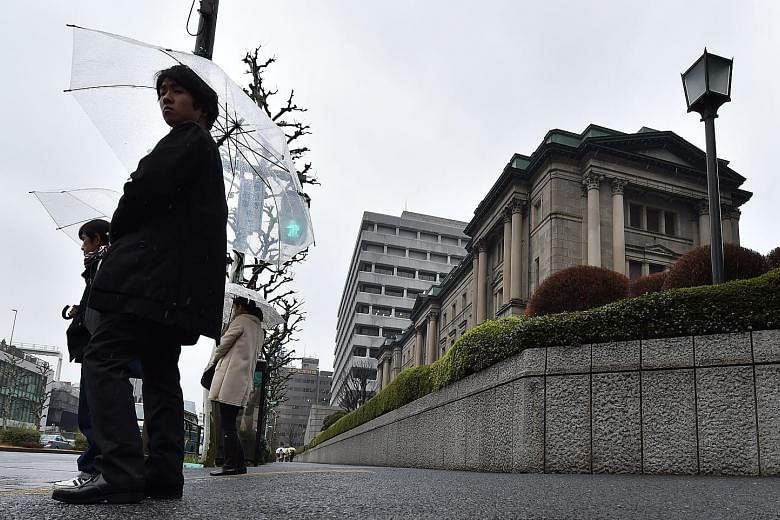A global stock rally gathered momentum in Asia yesterday as investors bet there will be no surprises coming out of policy meetings among central bankers in the United States and Japan this week.
But while central banks seem prepared to take aggressive action to support their economies, market watchers warn that any share rally may not last as any boost will stem more from financial engineering than genuine economic growth.
The improved sentiment has allowed the benchmark Straits Times Index to recoup much of the losses it incurred from the first two months of the year.
It rose as much as 1.3 per cent at one point yesterday, before closing 0.64 per cent higher or 18.20 points to 2,847.06.
It is now down 1.24 per cent for the year after being behind as much as 12.1 per cent at one point.
Elsewhere in Asia, Shanghai gained 1.8 per cent, Shenzhen jumped 3.6 per cent, Japan was up 1.7 per cent while Hong Kong rose 1.2 per cent.
While the US Federal Reserve's meeting this week is largely seen as a "non-event", with no interest rate hike likely, some analysts say the markets may be surprised by hints that hikes could continue at a rate faster than expected. For now, the odds of a June rise are increasing.
Investors will likely hold fire until the Bank of Japan (BOJ) makes its policy announcement today and the Fed makes its report early Thursday morning Singapore time.
Most economists expect the Fed to hold interest rates steady at 0.5 per cent but DBS Bank said it sees the Fed "raising rates three times this year, lifting the rate to 1.25 per cent by year-end".
With a rate hike unlikely, the US dollar weakened against most Asian currencies except for the Malaysian ringgit and the Indonesian rupiah, which fell with weaker oil prices.
The Singdollar was slightly higher against the greenback yesterday.
The Australian dollar and Thai baht have also risen against the US currency since last Friday.
Mr Herald van der Linde, HSBC's head of equity strategy for Asia-Pacific, noted that several central banks now use negative rates, and the Fed had mentioned earlier it would consider that a possible policy tool should economic conditions worsen.
He said: "In our view, recent market turbulence reflects exhaustion with unconventional policy measures and scepticism about whether they will work."
Meanwhile, the BOJ began its two-day meeting yesterday and is expected to keep policies unchanged after stunning markets by adopting negative interest rates in late January.
Following that interest rate decision, however, stock prices declined further and the yen strengthened, giving rise to scepticism about the effect of the additional monetary easing.


